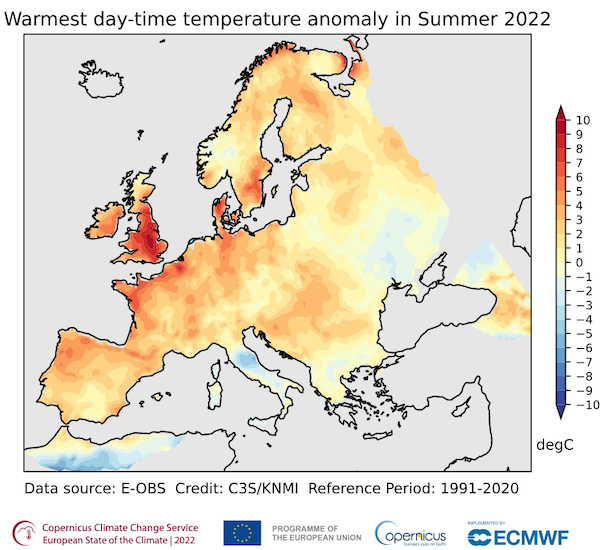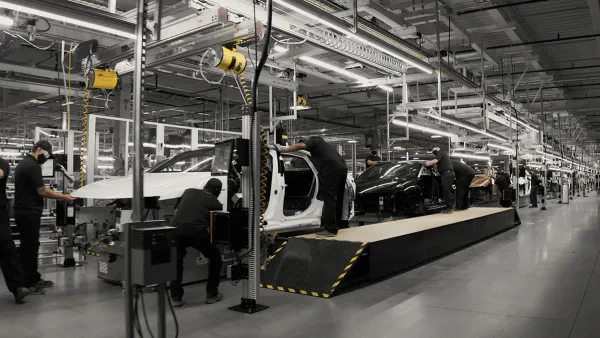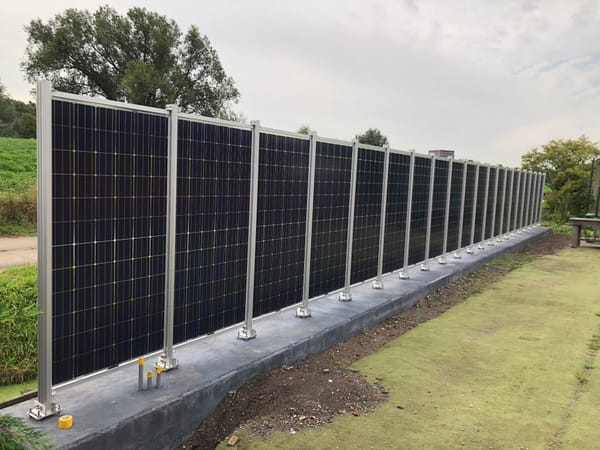Methane culture wars and the coming heatwave
The end times are here, the culture wars have come to our appliances.

The culture war over natural gas: Keep your stove for now
The end times are here, the culture wars have come to our appliances. “If the maniacs in the White House come for my stove, they can pry it from my cold dead hands. COME AND TAKE IT!!” tweeted Texan GOP Rep. Ronny Jackson. Oddly for the Congressman, data shows gas stoves are more prevalent in Democratic majority states.
While Jackson may have been stoked up over the U.S. DOE’s February announcement that about 50% of natural gas stoves on the market wouldn’t make it through proposed efficiency requirements, he may be gladdened by a Ninth Circuit Court ruling yesterday that rejected a Berkeley, Calif. ordinance banning natural gas stoves in new projects. The ruling – from one of America’s most liberal federal courts – has called into question dozens of other local efforts to ban natural gas, which has lately been connected to a significant number of asthma cases.
Induction stoves, which use magnetism to heat water and thus can’t burn you with a flame, are electric, and much more efficient than natural gas. While they’re expensive now – often two or three times more expensive than a gas stove – prices are coming down as the technology and production process matures.
- Berkeley argued that it can use local police power to halt natural gas line construction. The court ruled that the federal Energy Policy and Conservation Act preserves regulation of the energy use of products with the U.S. Department of Energy.
- Other local restrictions on natural gas instead require electrification through building codes, which the ruling did not impact. So, those will stay the same.
Sources: EnergyWire / Grist / The Atlantic / Canary
Deforestation pro: Build local economies / Deforestation con: Destroy global climate
The baseline expectation of various carbon emissions studies is that the Earth’s vast forests will still be around to absorb carbon-dioxide. But keeping them standing is proving to be a challenge. Besides the valuable timber trees provide, tropical countries like Indonesia, Malaysia, and Brazil have extensive plantations for palm oil, which is used in everything from shampoo to donuts. The struggle between keeping a forest for the sake of the climate, against chopping it down for the sake of economic development is a losing one when money is the thing that makes the world go around.
So far, there haven’t been many good solutions. Last week the European Union banned imports of palm oil, beef, coffee, and other goods linked to deforested countries. And while Brazil’s President Luiz Inacio Lula da Silva visited the White House, President Joe Biden committed $500 million to a fund committed to fighting Amazon deforestation (Europe has already given billions more).
- Indigenous peoples, who the U.N. is convening in a global meeting this week, say few deforestation efforts are doing anything to save forests, or give them jobs.
- Forested equatorial countries, like Gabon, have said they’ll ensure their forests remain untouched, if rich countries will provide billions of dollars to their economies in return.
- Equatorial forest countries from around the world met last month to discuss how to save the forests.
Sources: Reuters / Afrik21 / Bloomberg / VOA
Batteries are getting better – slowly
Almost all EV batteries are lithium-ion batteries, made up of lithium salt in a solvent as the cathode and highly refined graphite as the anode. Both lithium and high quality graphite are expensive and come from limited places, the lithium has to be sealed in a container to keep the solvent together, and in certain circumstances, the solvent can be explosive. Put that in my car, please!
So, battery researchers are racing to develop alternative solutions, such as a sodium-ion battery rolled out last week by a Chinese company, or a nickel-hydrogen battery created by a Kentucky outfit. Both have the advantage of using more easily sourced materials, nickel and sodium are mined on every continent. The sodium battery can use the same production process as lithium-ion batteries, using the same supply chain. The nickel battery is too unwieldy for EVs, but it can be used for tens of thousands of recharges, making it a long-lasting, good solution for load balancers that soak up solar power during the day and trickle back out at night.
- Solid state batteries that don’t rely on liquid solutions for cathodes with much higher storage capacity (and longer EV range), is the holy grail, but that’s maybe 10 years away.
- While dropping recently, lithium prices are high, driving big auto manufacturers like GM to invest in new, startup mines around the world.
Sources: Bloomberg / Canary / Grist
Heat waves in Europe and India expected to become a regular thing now
Americans are used to the idea of ubiquitous air conditioning. Too hot outside? Just go inside your home, or a store, or a government building. But last July my family and I were in Paris when, for days, temperatures regularly shot above 40 degrees Celsius, or 104 Fairenheit. That sounds like no big deal, except barely anyone in Paris has air conditioning. And the places that do, like museums and the Metro, don’t have the cooling power to keep up with truly hot temperatures.
Now, imagine higher temperatures lasting for weeks, like Northern India and Iran experienced last year, and also there’s no air conditioned cooling centers, then you’ve got a real problem. Northern India is already seeing 44 degree temperatures this week. It seems like climate change is bringing heat waves to unexpected places already, and it’s only getting worse.
- Copernicus Climate Change Service reports Europe has already warmed more than 2.2 degrees Celsius (3.9 degrees Fahrenheit) from the pre-fossil fuel era
- In 2022 Southern Europe experienced a record number of days with ‘very strong heat stress,’” defined as temperatures from 38 to 46 degrees Celsius (100 to 115 degrees Fahrenheit).
- Last summer was Europe’s warmest on record, and heat waves killed more than 15,000 people
- Europe has warmed at twice the global average rate the past two decades. India saw its warmest dry season in 122 years.
- Last year saw a record melting of Alpine glaciers, with more than five cubic kilometers of ice disappearing.
- Parts of India experienced record-breaking 49 degrees Celsius heat last April and May (120 degrees Fahrenheit). In Jacobabad, Pakistan they regularly broke the 50C mark.
- Long-term projections from a recent study indicate that Indian heatwaves could cross the survivability limit for a healthy human resting in the shade by 2050.
Sources: Bloomberg / AP / Inside Climate News / PLOS Climate / Copernicus Climate Change Service
Some other things going on
Scientists find methane emissions from oil & gas 70% higher than EPA originally estimated. Two studies show nuclear energy has significant environmental benefits. Pentagon doesn’t like off-shore wind because it interferes with military exercises. U.S. needs 1 million more electricians to fulfill electrification goals.





